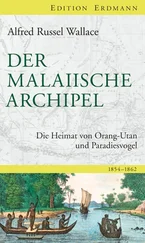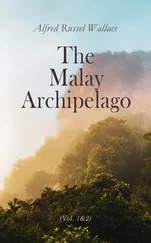Alfred Wallace - Travels on the Amazon
Здесь есть возможность читать онлайн «Alfred Wallace - Travels on the Amazon» — ознакомительный отрывок электронной книги совершенно бесплатно, а после прочтения отрывка купить полную версию. В некоторых случаях можно слушать аудио, скачать через торрент в формате fb2 и присутствует краткое содержание. Жанр: Путешествия и география, foreign_antique, foreign_prose, на английском языке. Описание произведения, (предисловие) а так же отзывы посетителей доступны на портале библиотеки ЛибКат.
- Название:Travels on the Amazon
- Автор:
- Жанр:
- Год:неизвестен
- ISBN:нет данных
- Рейтинг книги:4 / 5. Голосов: 1
-
Избранное:Добавить в избранное
- Отзывы:
-
Ваша оценка:
- 80
- 1
- 2
- 3
- 4
- 5
Travels on the Amazon: краткое содержание, описание и аннотация
Предлагаем к чтению аннотацию, описание, краткое содержание или предисловие (зависит от того, что написал сам автор книги «Travels on the Amazon»). Если вы не нашли необходимую информацию о книге — напишите в комментариях, мы постараемся отыскать её.
Travels on the Amazon — читать онлайн ознакомительный отрывок
Ниже представлен текст книги, разбитый по страницам. Система сохранения места последней прочитанной страницы, позволяет с удобством читать онлайн бесплатно книгу «Travels on the Amazon», без необходимости каждый раз заново искать на чём Вы остановились. Поставьте закладку, и сможете в любой момент перейти на страницу, на которой закончили чтение.
Интервал:
Закладка:
During one of our exploratory rambles we came upon the country-house of a French gentleman, M. Borlaz, who is Swiss Consul in Pará. Much to our surprise he addressed us in English, and then showed us round his grounds, and pointed out to us the paths in the woods we should find most practicable. The vegetation here on the banks of the river, a mile below Pará, was very rich. The Miriti ( Mauritia flexuosa ), a fine fan-palm, and a slender species, the Marajá ( Bactris Maraja ), a small prickly tree which bears a fruit with a thin outer pulp, of a pleasant subacid taste, were both abundant. A mass of cactus, thirty feet high, grew near the house, having a most tropical aspect, but this was planted. The thickets were full of curious Bromeliaceæ and Arums , and many singular trees and shrubs, and in their shady recesses we captured some very fine insects. The splendid blue and orange butterflies ( Epicalia ancea ) were abundant, settling on the leaves; and they would repeatedly return to the same tree, and even to the same leaf, so that, though very difficult to capture, five specimens were taken without removing from the spot.
On our return to the house M. Borlaz treated us to some fine fruits,—the berribee, a species of Anona , with a pleasant acid custard-like pulp, the nuts of the bread-fruit roasted, very similar to Spanish chestnuts, and plantains dried in the sun, and much resembling figs. The situation of the house was delightful, looking over the river to the opposite islands, yet sufficiently elevated to be dry and healthy. The moist woods along the bank of the river were so productive that we often afterwards availed ourselves of M. Borlaz' kind invitation to visit his grounds whenever we felt disposed. As an instance of the voracity of the ants, I may mention that, having laid down my collecting-box in the verandah during half-an-hour's conversation, I was horrified to find, on opening it to put in a fresh capture, that it swarmed with small red ants, who had already separated the wings from near a dozen insects, and were dragging them in different directions about the box; others were at the process of dismemberment, while some had buried themselves in the plumpest bodies, where they were enjoying a delicious repast. I had great difficulty in making them quit their prey, and gained some useful experience at the expense of half a successful day's captures, including some of the splendid Epicalias which I so much prized.
On the morning of the 23rd of June we started early to walk to the rice-mills at Magoary, which we had been invited to visit by the proprietor, Mr. Upton, and the manager, Mr. Leavens, both American gentlemen. At about two miles from the city we entered the virgin forest, which the increased height of the trees and the deeper shade had some time told us we were approaching. Its striking characteristics were, the great number and variety of the forest-trees, their trunks rising frequently for sixty or eighty feet without a branch, and perfectly straight; the huge creepers, which climb about them, sometimes stretching obliquely from their summits like the stays of a mast, sometimes winding around their trunks like immense serpents waiting for their prey. Here, two or three together, twisting spirally round each other, form a complete living cable, as if to bind securely these monarchs of the forest; there, they form tangled festoons, and, covered themselves with smaller creepers and parasitic plants, hide the parent stem from sight.
Among the trees the various kinds that have buttresses projecting around their base are the most striking and peculiar. Some of these buttresses are much longer than they are high springing from a distance of eight or ten feet from the base, and reaching only four or five feet high on the trunk, while others rise to the height of twenty or thirty feet, and can even be distinguished as ribs on the stem to forty or fifty. They are complete wooden walls, from six inches to a foot thick, sometimes branching into two or three, and extending straight out to such a distance as to afford room for a comfortable hut in the angle between them. Large square pieces are often cut out of them to make paddles, and for other uses, the wood being generally very light and soft.
Other trees, again, appear as if they were formed by a number of slender stems growing together. They are deeply furrowed and ribbed for their whole height, and in places these furrows reach quite through them, like windows in a narrow tower, yet they run up as high as the loftiest trees of the forest, with a straight stem of uniform diameter. Another most curious form is presented by those which have many of their roots high above the surface of the ground, appearing to stand on many legs, and often forming archways large enough for a man to walk beneath.
The stems of all these trees, and the climbers that wind or wave around them, support a multitude of dependants. Tillandsias and other Bromeliaceæ , resembling wild pine-apples, large climbing Arums , with their dark green arrowhead-shaped leaves, peppers in great variety, and large-leaved ferns, shoot out at intervals all up the stem, to the very topmost branches. Between these, creeping ferns and delicate little species like our Hymenophyllum abound, and in moist dark places the leaves of these are again covered with minute creeping mosses and Hepaticæ ,—so that we have parasites on parasites, and on these parasites again. On looking upwards, the finely-divided foliage, strongly defined against the clear sky, is a striking characteristic of the tropical forests, as is repeatedly remarked by Humboldt. Many of the largest forest-trees have leaves as delicate as those of the trembling Mimosa , belonging like them to the extensive family of the Leguminosæ , while the huge palmate leaves of the Cecropias , the oval glossy leaves of the Clusias , and a hundred others of intermediate forms, afford sufficient variety; and the bright sunshine lighting up all above while a sombre gloom reigns below, adds to the grandeur and solemnity of the scene.
Flowers were very few and far between, a few small Orchideæ and inconspicuous wayside weeds, with now and then a white- or green-blossomed shrub, being all that we met with. On the ground many varieties of fruits lay decaying: curiously twisted legumes like peas a yard long, huge broad beans, nuts of various sizes and forms, and large fruits of the pot-trees, which have lids like the utensil from which they derive their name. The herbage consisted principally of ferns, Scitamineæ , a few grasses and small creeping plants; but dead leaves and rotten wood occupied the greater part of the surface.
We found very few insects, but almost all that we met with were new to us. Our greatest treasure was the beautiful clear-winged butterfly, with a bright violet patch on its lower wings, the Hætera esmeralda , which we now saw and caught for the first time. Many other rare insects were also obtained, and the gigantic blue Morphos frequently passed us, but their undulating flight baffled all our efforts at capturing them. Of quadrupeds we saw none, and of birds but few, though we heard enough of the latter to assure us that they were not altogether wanting. We are inclined to think that the general statement, that the birds of the tropics have a deficiency of song proportionate to their brilliancy of plumage, requires to be modified. Many of the brilliant birds of the tropics belong to families or groups which have no song; but our most brilliantly coloured birds, as the goldfinch and canary, are not the less musical, and there are many beautiful little birds here which are equally so. We heard notes resembling those of the blackbird and the robin, and one bird gave forth three or four sweet plaintive tones that particularly attracted our attention; while many have peculiar cries, in which words may easily be traced by the fanciful, and which in the stillness of the forest have a very pleasing effect.
Читать дальшеИнтервал:
Закладка:
Похожие книги на «Travels on the Amazon»
Представляем Вашему вниманию похожие книги на «Travels on the Amazon» списком для выбора. Мы отобрали схожую по названию и смыслу литературу в надежде предоставить читателям больше вариантов отыскать новые, интересные, ещё непрочитанные произведения.
Обсуждение, отзывы о книге «Travels on the Amazon» и просто собственные мнения читателей. Оставьте ваши комментарии, напишите, что Вы думаете о произведении, его смысле или главных героях. Укажите что конкретно понравилось, а что нет, и почему Вы так считаете.












